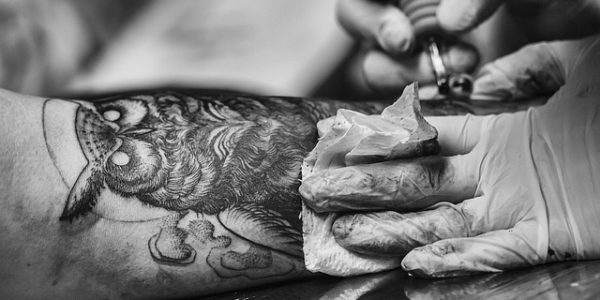Robotic arms and human arms are quite different. An industrial robotic is made of cold metal, guided by servos, yet is powerful enough to lift car parts, and precise enough to assist in medical surgeries. Human arms, on the other hand, are made of warm, squishy tissues, struggle with heavy boxes, and support hands that get shaky with too much coffee. Of course human arms have something that robotic arms do not. Tattoos.
Robots have never had a place in the world of tattoos. Tattoo artists are human, and their customers are human. But that’s changed. Tattoo artist has now joined the list of jobs that could become automated in the not-so-distant future. For the first time ever, an industrial robot successfully tattooed a living, breathing human.
The world’s first tattoo by a robot
A French design team was the driving force behind the “world’s first tattoo by an industrial robot”. The idea started with a modified 3D printer equipped with a needle and ink. This successfully took tattooing out of the hands of humans, but the team wanted to up the ante. They set their sights on a big industrial robot performing the precise and delicate task of tattooing.
This time they used an industrial robotic arm rather than a 3D printer. They attached a tattoo gun to a Fanuc-M710ic robot, a type of robot commonly used in auto plants. The team then scanned one of the team member’s legs and uploaded it into a format that the robot could understand. Then, magic happened. You can watch the video below.
World’s First Tattoo by Industrial Robot from Pier 9 on Vimeo.
It’s definitely cool to see a big, hulking, potentially dangerous robot perform such a delicate procedure. Typically this type of robot must be used away from people to ensure safety, yet the team was able to safely carry out an action that required the robot to be in constant contact with a human.
Is it doom and gloom for tattoo artists?
Now that the world has seen its first tattoo by an industrial robot, are tattoo artists out of a job?
Some might say that an artist, tattoo or otherwise, cannot be replaced. They might say that creativity and art aren’t something that can be automated, and creation is unique to people. This is certainly an arguable stance, but many people who get tattoos aren’t concerned about art or creativity. They might pick a design out of a book, or find a picture online, and be perfectly content with their new ink. An industrial robot that could perfectly execute thousands of designs in your choice of color would be more than adequate for most people.
What does this mean for industrial robots?
While this accomplishment isn’t likely to take the tattoo world by storm, it could be significant for industrial robots and manufacturing. The relationship between humans and machines is an important component in industry. This could help drive other research that may help advance technology in the field.



